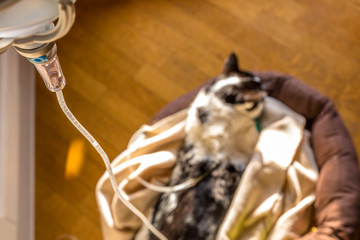Cats, particularly the older ones are susceptible to kidney diseases. About 30% of the aged domestic cats suffer from kidney diseases – either acute or chronic. Here is a quick guide to the how and why of kidney disease in cats.
Signs and symptoms
Early detection is the key to control and successful treatment of kidney disease in cats. Cats with kidney disease may show early signs such as increased thirst, using larger amounts of litter, urinating more frequently, losing weight, experiencing a decreased appetite, and suffering from nausea and vomiting. Other symptoms to watch out for are – lethargy, drowsiness, unkempt appearance, pale gums (anemia), bad breath due to oral ulcers.

Common kidney diseases
When you have noticed these early symptoms in your aged cat, it is time to consult your veterinarian. The vet may run tests to screen for the most common kidney conditions that may lead to kidney damage. Some of them are kidney infection, kidney stones, disease of kidney tubules, glomerulonephritis, cancer and polycystic kidney disease.
Diagnosis
Physical Examination: The first line of diagnosis is always a thorough physical examination that involves observing the body temperature, abdominal palpitation, renal asymmetry, painful kidneys and evidence of high blood pressure.
Laboratory Tests: if initial physical examination indicates symptoms of kidney malfunction, lab tests are performed including Complete blood picture, urinalysis, urine culture, protein to creatinine profile, imaging and biopsy.
Treatment
Treatments include medications to prevent protein loss, anemia and enzyme inhibitors.
If blockages are found, the veterinarian may suggest surgery and the administration of IV fluids. They will also recommend dietary restrictions, including low salt and phosphorous intake, and moderate protein intake.





